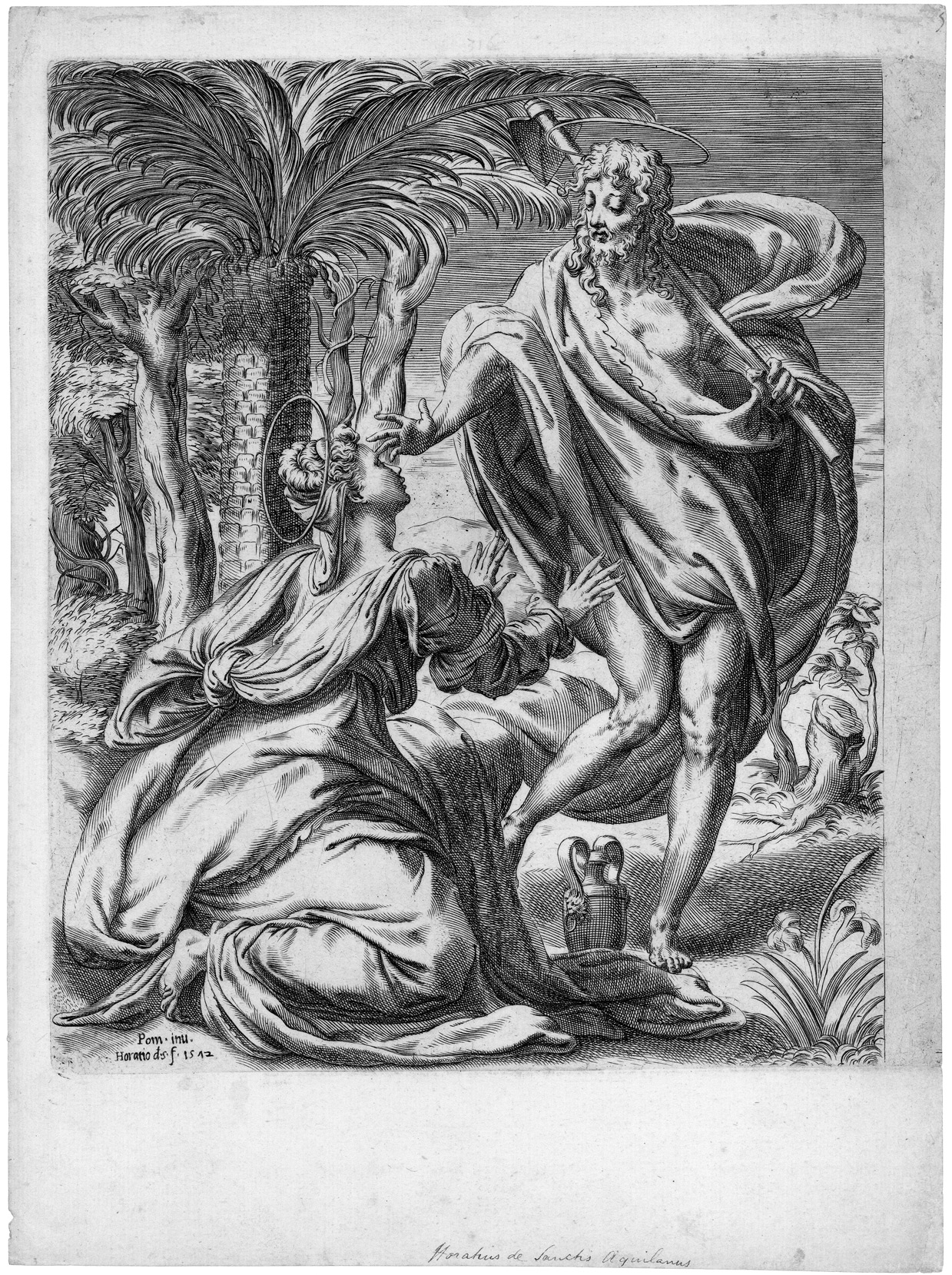Loading the page ...
Orazio de Santis
(called Aquilano, active between 1568 – 1584)
Christ and Mary Magdalene. Etching. 27.2 x 23.8 cm. 1572. B. XVII, 11, 11.
Orazio de Santis’ small printed oeuvre is comprised almost entirely of etchings after designs by the painter and sculptor Pompeo Cesura, called Aquilano, to whom he was possibly related. The lat ter is thought to have been a student of Perino del Vaga and worked his entire life in Rome. De Santis, whose biography is rather incomplete, also received the appelation Aquilano. Working as a publisher and engraver, Orazio must also have spent most of his life in Rome, which is confirmed, for example, by his collaboration with Cherubino Alberti. In stylistic terms, de Santis is a typical representative of late Roman Mannerism. He developed an elegant, fluid and painterly style which was sometimes overrefined to the point of artificiality, combining influences by Parmigianino with elements of the Roman maniera. Aquilano’s engraving style was indebted moreover to the printed work of Giulio Bonasone. The present composition is a characteristic example of this composite formal language. Worthy of note is the mannerist exaggeration of the contrapposto of the figure of Jesus, who moves with the airy elegance of a dancer. The pronounced S-curve of his body contrasts with the static pose of the kneeling Mary Magdalene. The ample curves of her body are covered by a voluminous drapery, whose heavy folds seem to anchor her to the ground. The whole scene is imbued with an inner unrest. A light breath of wind pulls at the tips of the garments and whispers through the foliage of the trees and shrubbery.
A superb, strong and contrasting impression with narrow margins around the platemark on three sides and a wide margin at the bottom. As is clear from a comparison with the impression in the British Museum in London (TIB , vol. 34, 17, p. 25), this is probably an undescribed state, before the reduction of the plate on the right. Slight aging, an old inscription in pen and ink in the lower margin, otherwise in excellent, unrestored condition.
